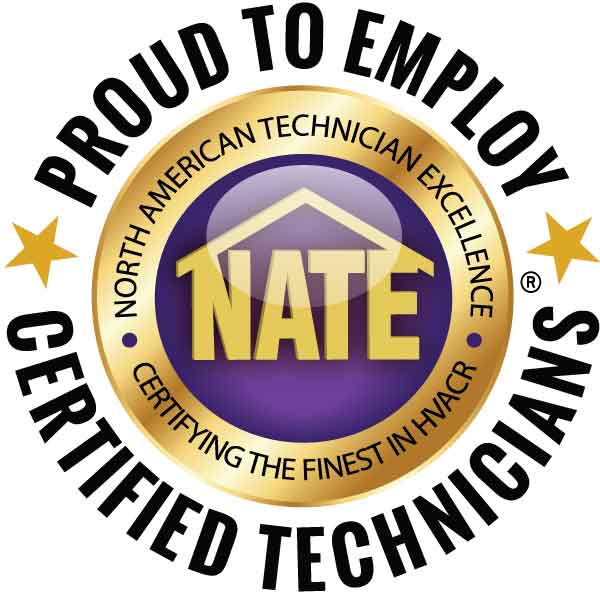Table of Contents
Introduction
When it comes to maintaining comfort in your home or office, understanding how your HVAC (Heating, Ventilation, and Air Conditioning) system works is essential. HVAC systems play a pivotal role in regulating indoor temperature, air quality, and overall comfort, especially in areas with fluctuating weather conditions like Southern California. This 11-part series aims to break down the complex components of HVAC systems into easy-to-understand sections, helping you gain a better understanding of how each part contributes to the overall functionality of your heating and cooling setup.
Throughout this series, we will explore everything from the basics of heating and cooling equipment to the latest innovations in energy efficiency and air quality management. By understanding how your HVAC system operates, you can make informed decisions about maintenance, upgrades, and repairs, ensuring optimal performance year-round. Whether you are looking to improve the efficiency of your current system or are considering a full replacement, this series will guide you through the essential knowledge you need.
What is an HVAC System?
HVAC stands for Heating, Ventilation, and Air Conditioning, and it refers to the various systems used to move air between indoor and outdoor areas, along with heating and cooling both residential and commercial buildings. An HVAC system is not a singular unit; it is a combination of several different components, each working together to provide optimal indoor climate control.
At its core, an HVAC system includes three key elements:
- Heating: This typically involves a furnace or heat pump that provides warmth during colder months.
- Cooling: Air conditioners or heat pumps that cool the indoor environment during warmer months.
- Ventilation: A system of ducts and fans that move air throughout the home or building, ensuring proper air circulation and indoor air quality.
In addition to these primary functions, many modern HVAC systems incorporate other features like air purification, humidity control, and energy recovery, which we’ll cover in later blogs. These systems are designed to work seamlessly together, providing you with a comfortable, healthy, and energy-efficient indoor environment.
Why HVAC Systems are Important
The importance of HVAC systems extends beyond comfort. These systems are critical for ensuring indoor air quality, maintaining the structural integrity of a building, and even contributing to energy efficiency. Let’s take a closer look at why HVAC systems are so essential:
- Comfort: HVAC systems allow you to maintain a consistent indoor temperature, regardless of outdoor weather conditions. Whether it’s scorching hot or freezing cold, a well-functioning HVAC system will keep your home or office at the perfect temperature.
- Air Quality: Ventilation is key to maintaining good indoor air quality. HVAC systems help filter out contaminants like dust, allergens, and pollutants, creating a healthier environment for occupants.
- Energy Efficiency: Modern HVAC systems are designed to be energy-efficient, which not only reduces your carbon footprint but also lowers utility bills. By regulating heating and cooling more effectively, energy-efficient systems help reduce unnecessary energy consumption.
Components of an HVAC System
Understanding the different components of your HVAC system is the first step toward knowing how to maintain it. Here are the major parts that make up a complete HVAC system:
- Thermostat: The thermostat is the control center of your HVAC system. It allows you to set and regulate the temperature in your home or office, ensuring that the system runs only when necessary.
- Furnace/Boiler: These are the heating units of your HVAC system. While furnaces heat air and distribute it via ducts, boilers use water to distribute heat through radiators.
- Air Conditioner: The air conditioning unit is responsible for cooling your home or office during warmer months. It absorbs heat from the indoor air and releases it outside, cooling the indoor environment.
- Heat Pump: Heat pumps can be used for both heating and cooling. In cold weather, a heat pump extracts heat from the outside air and brings it indoors. In warm weather, it works like an air conditioner, removing heat from inside the building.
- Ductwork: Ducts are responsible for distributing air throughout the home or building. Properly sealed and insulated ducts ensure that air reaches every room efficiently.
- Ventilation Fans: These fans help circulate air throughout the building and can also be used to remove stale air from bathrooms, kitchens, and other areas.
- Air Filters: HVAC systems often include air filters to trap dust, allergens, and other airborne particles, improving indoor air quality.
- Condensing Unit: This is the part of the air conditioner or heat pump that is located outside. It releases the heat absorbed from inside the home.
- Evaporator Coil: Located inside, the evaporator coil absorbs heat from the indoor air and helps cool your home.
- Refrigerant Lines: These lines carry refrigerant between the condensing unit and the evaporator coil. The refrigerant is responsible for cooling the air.
Maintaining Your HVAC System
Maintenance is key to keeping your HVAC system running efficiently. Regular inspections and servicing can extend the lifespan of your equipment, reduce energy costs, and prevent breakdowns. Here are some essential maintenance tasks:
- Change Air Filters Regularly: Dirty air filters can restrict airflow, causing your system to work harder and consume more energy. Changing your air filters every 1-3 months is an easy way to improve efficiency.
- Inspect Ductwork for Leaks: Leaky ducts can result in air loss, reducing the efficiency of your system. Make sure to have your ductwork inspected regularly and sealed if necessary.
- Clean the Condenser Unit: The outdoor condenser unit can become clogged with dirt, leaves, and debris. Cleaning it regularly ensures that it operates efficiently.
- Schedule Annual Maintenance: Having your HVAC system serviced annually by a professional technician is crucial for identifying potential issues before they become major problems.
The Role of Technology in Modern HVAC Systems
With the rise of smart home technology, HVAC systems are becoming more advanced and user-friendly. Modern thermostats can be programmed to adjust temperatures based on your daily schedule, and some even offer Wi-Fi connectivity, allowing you to control your system remotely from a smartphone.
In addition to smart thermostats, energy-efficient HVAC units are equipped with advanced sensors and controls that optimize performance based on real-time conditions. This not only improves comfort but also helps reduce energy consumption.
Conclusion
Understanding your HVAC system is the first step in ensuring that it operates efficiently and effectively throughout the year. By familiarizing yourself with the various components and the importance of regular maintenance, you can extend the life of your system and improve comfort in your home or office.
This blog is just the beginning of our 11-part series, which will dive deeper into the specifics of heating equipment, cooling equipment, ventilation systems, and more. Stay tuned for the next post, where we will explore the different types of heating equipment and how to maintain them.
Contact SoCal Climate Control Heating and Air Conditioning
At SoCal Climate Control, we believe in providing high-quality HVAC services tailored to meet your specific needs. Whether you need maintenance, repair, or installation, our expertly trained technicians are here to help. Contact us today at (833) 202-0763 or visit our website to learn more about our services. We proudly serve Los Angeles County, Ventura County, and beyond.











